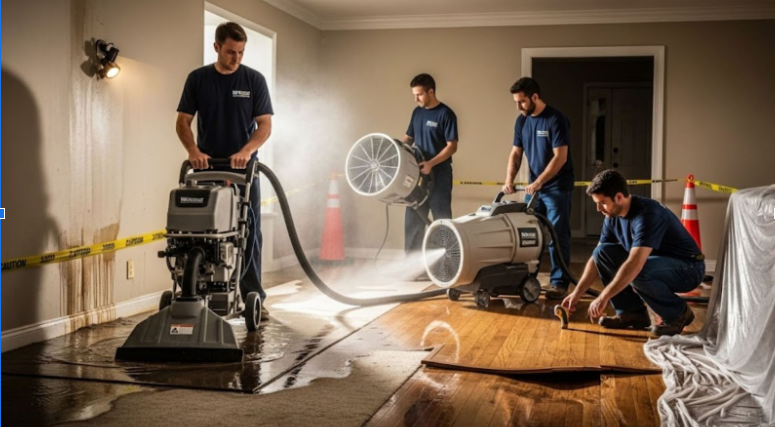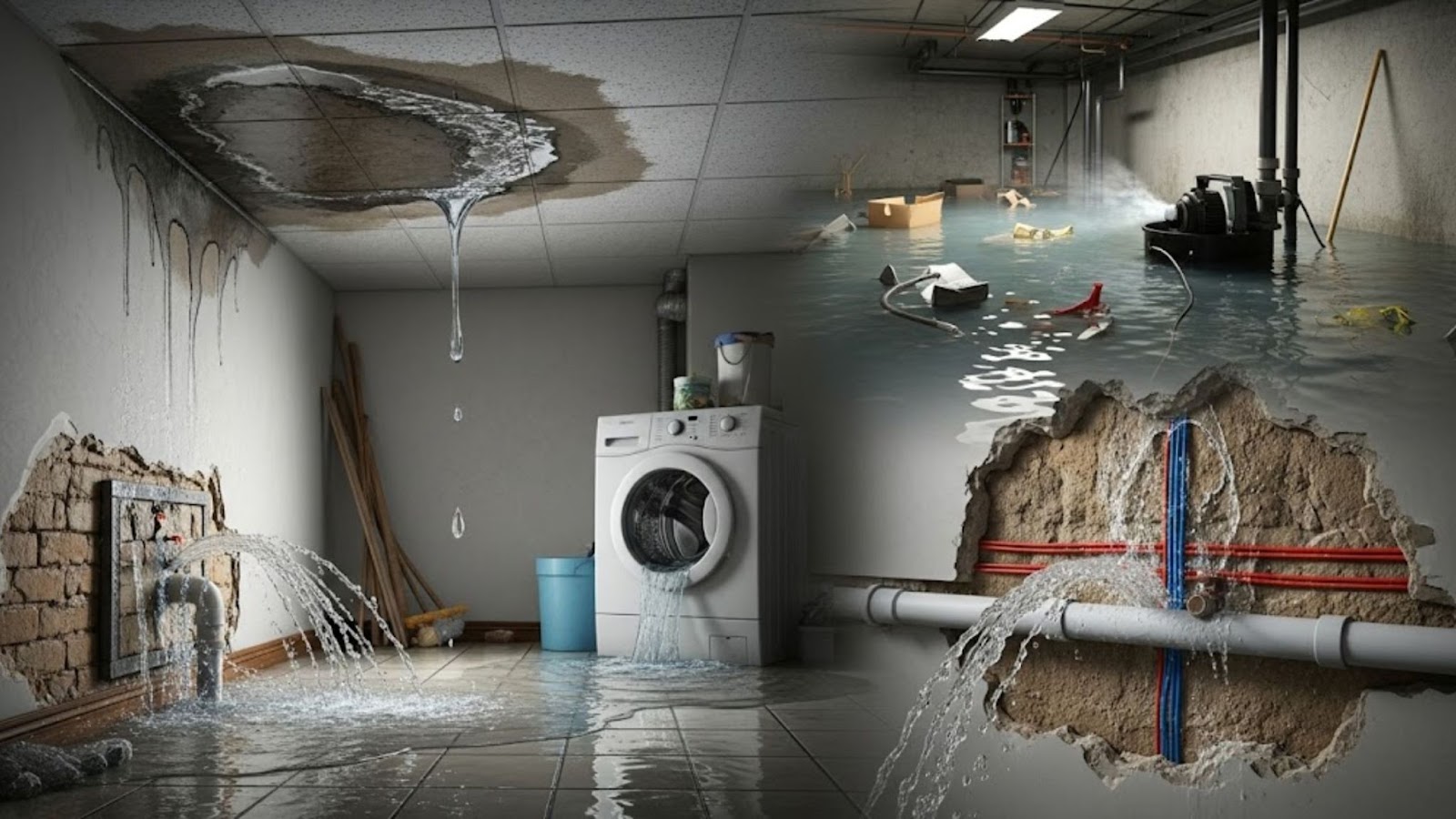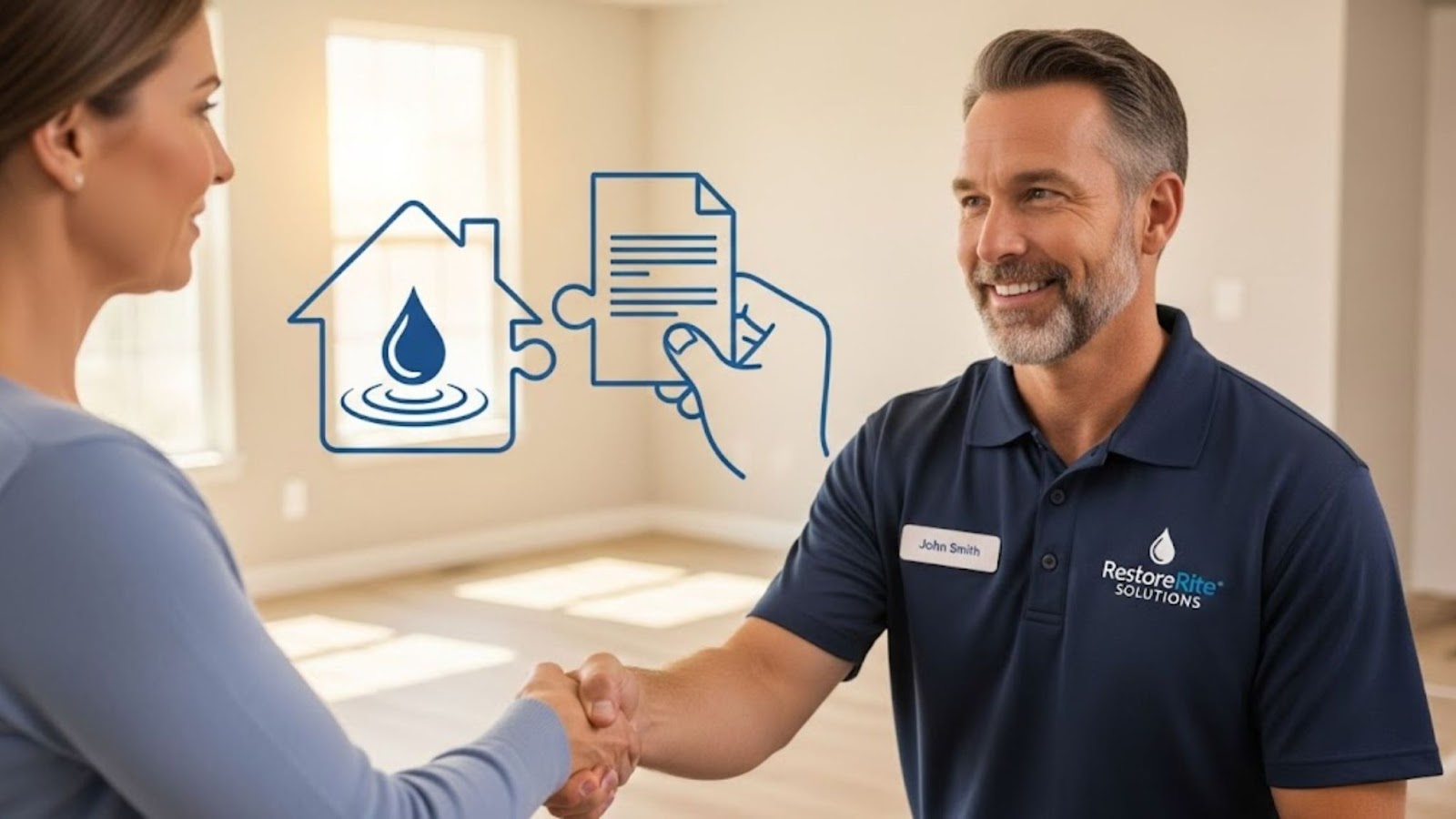
Water Damage Restoration Services play a pivotal role in safeguarding both residential and commercial properties from the cascading costs of untreated water intrusion. When moisture infiltrates walls, floors, and structural components, the clock starts ticking on potential secondary damage. By mobilizing a professional restoration crew at the first sign of leaks or flooding, property owners can dramatically reduce repair bills. Rapid action not only preserves building materials but also mitigates health risks associated with mold proliferation. Understanding why speed matters is essential to both preventing extensive deterioration and keeping expenses in check.
Water Damage Restoration Services must be initiated within 24 to 48 hours of water exposure to halt progressive deterioration. At the microscopic level, water seeps into drywall, latches onto wood fibers, and saturates carpeting in mere hours. Without timely extraction and structural drying, mold spores exploit damp conditions to form colonies, leading to costly mold remediation down the road. Addressing water damage swiftly reduces the likelihood of replacement costs for sheetrock, hardwood flooring, and insulation. In essence, every hour counts when it comes to saving thousands in potential repairs.

Burst pipes top the list of contributors to water damage in buildings. Cast iron plumbing from older installations often corrodes and ruptures, unleashing gallons of water into basements or living spaces. Roof leaks represent another major culprit, especially after heavy rains when worn shingles and blocked gutters permit rainwater to infiltrate attic assemblies. Floodplain properties along riverbanks face seasonal inundation that overwhelms sump pumps and floor drains. Even minor sources, such as overflowing sinks or malfunctioning water heaters, can generate enough moisture to damage wood joists and drywall seams over time. Understanding these origins guides property owners toward preventive measures that curb repair outlays.
Water damage technicians employ moisture meters and thermal imaging cameras to pinpoint wet zones behind walls and beneath flooring. By measuring moisture content in building materials, they determine whether immediate extraction or structural drying is required. In advanced assessments, hygrometers gauge relative humidity to ensure that air moving and dehumidification strategies will be sufficient to lower moisture levels below critical thresholds. Once assessment is complete, technicians remove standing water using high-capacity pumps, then deploy commercial-grade dehumidifiers and air movers to complete the drying cycle. Throughout this process, constant moisture monitoring ensures that hidden pockets of dampness are eradicated. Bold Water Damage Restoration Services procedures like these demonstrate why professional intervention is more cost-efficient than DIY tactics.
Restoration professionals rely on a suite of specialized machines designed for rapid extraction and drying. High-volume submersible pumps evacuate standing water, while truck-mounted vacuum units handle deep saturation in crawl spaces. To expedite evaporation, air movers propel warm, low-humidity airflow across wet surfaces, whereas dehumidifiers capture airborne moisture to maintain optimal drying conditions. Infrared cameras and moisture sensors continually track drying progress in concealed cavities. For drywall and insulation removal, restoration teams use reciprocating saws and a range of extraction tools that minimize demolition waste. Collectively, these advanced devices accelerate restoration timelines, reducing labor hours and material replacement expenses.

When floodwaters breach foundations, they carry soil, debris, and contaminants that compromise structural integrity. In addition to physical damage, category two or three floodwater introduces bacteria and sewage, posing serious health hazards. A rapid response team isolates affected zones, installs containment barriers, and initiates water removal within hours of arrival. By intervening quickly, restoration specialists prevent secondary costs tied to mold remediation, wood rot repairs, and electrical system replacements. Bold Rapid Response Guarantee arrangements offered by leading firms ensure that crews deploy around the clock, reducing cumulative downtime and limiting out-of-pocket repair fees for building owners.
Regular maintenance of roofing, gutters, and downspouts eliminates common entry points for rainwater and melting snow. Proper grading around foundations diverts surface water away from basements, while routine checks of sump pump functionality prevent groundwater infiltration. Installing moisture barriers beneath slab-on-grade floors and applying waterproof sealants to vulnerable walls fortify buildings against minor leaks. Annual inspections of plumbing lines, including PEX and CPVC piping, catch potential failures before they escalate. These targeted preventive strategies help property owners manage water damage repair cost by limiting the frequency and severity of restoration calls.
Mold spores thrive in damp, dark environments and can begin colonizing within 24 to 48 hours of water exposure. Rapid drying of carpeting, drywall, and structural timbers is the first defense against mold. Technicians apply EPA-registered antimicrobial agents to sanitized surfaces, reducing fungal viability without damaging building materials. Ventilation of enclosed spaces using negative air machines further hinders spore dispersion. In areas requiring reconstruction, mold-resistant drywall and high-density insulation boards serve as durable substrates that discourage future growth. Bold Disaster Response Team protocols integrate mold prevention into every stage of restoration, ensuring healthier indoor air quality and avoiding steep mold remediation fees.

Documenting damage thoroughly is essential to streamline insurance coverage for water events. Restoration firms photograph flooded areas before intervention and provide itemized scope-of-work estimates that align with industry-standard pricing guides. Technicians maintain daily logs of drying equipment usage and moisture readings to validate drying progress. These records, when submitted alongside homeowner’s insurance or commercial property claims, substantiate the necessity of both emergency services and reconstruction tasks. By coordinating with insurers and providing transparent documentation, restoration specialists help policyholders recoup allowable expenses without protracted disputes.
Initial water extraction typically concludes within the first 24 to 48 hours of technician arrival. Structural drying extends over three to seven days, depending on severity and ambient humidity levels. Mold prevention measures and microbial treatments require an additional day of dwell time prior to demolition or reconstruction. Building material repairs—such as drywall replacement, repainting, and flooring installation—can span one to three weeks based on project scope. Bold Contact us if rapid scheduling is critical, as delays in any phase risk compounded costs and extended vacancy periods. Well-coordinated timelines drastically reduce cumulative expenses associated with prolonged restoration.
Inexperienced remediation attempts often overlook hidden moisture pockets behind walls and under subfloors, leading to recurring issues. Professional restoration crews bring specialized equipment, moisture expertise, and proven drying protocols that maximize efficiency. They understand water category distinctions—clean water from supply lines versus contaminated floodwater—and apply the correct safety and disposal procedures. Their knowledge of local building codes ensures repair work maintains structural and fire safety standards. Investing in certified technicians not only stops current damages but also preserves property value, avoids future costly callbacks, and fulfills warranty obligations for building materials.
ReBuilders Commercial Restoration leverages a decade of specialized experience across commercial and multifamily sectors. Their teams hold IICRC (Institute of Inspection, Cleaning and Restoration Certification) credentials in water damage, mold remediation, and applied structural drying. Customized service agreements include 24/7 emergency mobilization, transparent pricing, and online customer portals for real-time progress updates. Localized crews understand regional climate challenges—monsoon-season flooding in Punjab or sudden pipe freezes in colder climates—and tailor restoration strategies accordingly. Their emphasis on continuous training, safety compliance, and empathy for affected occupants sets them apart in the fast-paced restoration marketplace.
In the realm of building maintenance, time is asset number one when facing water intrusion events. Rapid deployment of Water Damage Restoration Services minimizes structural decay, mold proliferation, and long-term repair costs. From moisture mapping with infrared cameras to industrial-grade dehumidification, each step in a professional restoration program is designed to safeguard both property and occupant health. By entrusting the process to seasoned experts, property owners can avoid the spiraling expenses of uncontrolled water damage. When efficiency, expertise, and local insight matter most, ReBuilders Commercial Restoration delivers prompt, comprehensive solutions that protect investments and ensure peace of mind.
By adhering to best practices in rapid response, advanced drying techniques, and meticulous documentation, property owners can turn potential financial disasters into manageable remediation projects. Investing in timely Water Damage Restoration Services ensures thousands of dollars in savings and preserves the integrity and value of every building.
Professional water damage repair cost varies based on the extent of saturation, affected materials, and drying time. Small repairs might start around a few hundred dollars, while extensive flooding or mold remediation can reach tens of thousands. Accurate estimates require on-site assessment with moisture meters and pilot drying tests.
Yes. Homeowners should extract visible water, increase ventilation with fans, and lower indoor humidity using portable dehumidifiers. Cleaning affected surfaces with a mild detergent followed by an EPA-registered mold inhibitor can suppress mold spores before they establish colonies.
Flood damage restoration services encompass water extraction, debris removal, microbial treatment, structural drying, and reconstruction of damaged building elements. Technicians also disinfect surfaces and coordinate with insurers to document loss.
Disaster response teams activate prearranged mobilization protocols, dispatching crews equipped for large-scale flood damage restoration. They set up command centers, triage affected properties, and scale resources—additional pumps, generators, and specialized drying apparatus—to manage widespread water intrusion.